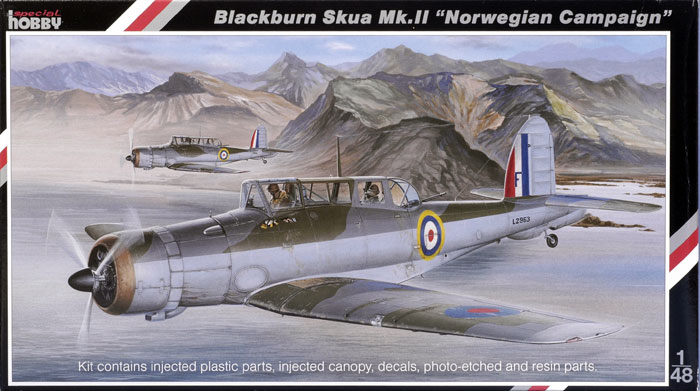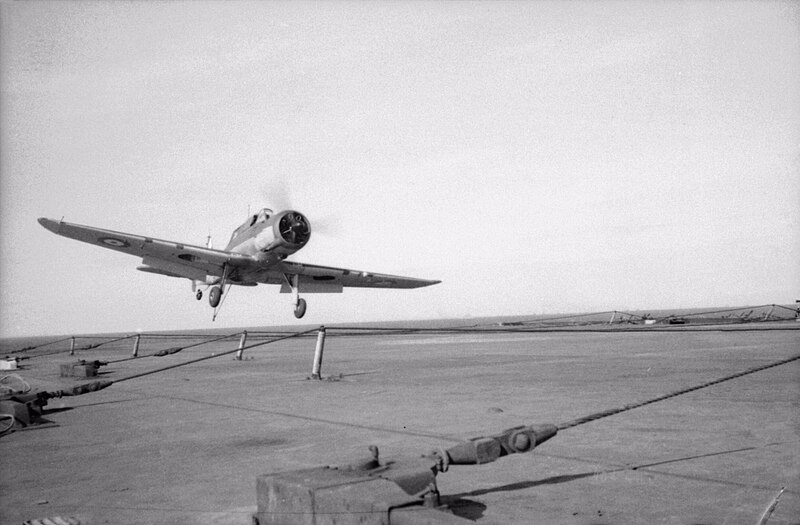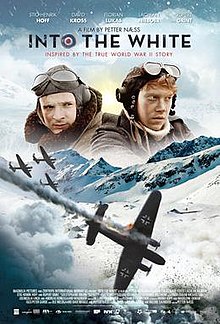Built to Air Ministry specification O.27/34 , it was a low-wing monoplane of all-metal (duralumin) construction, with a retractable undercarriage and enclosed cockpit . It was the Fleet Air Arm 's first service monoplane and was a radical departure for a force that was primarily equipped with open-cockpit biplanes such as the Fairey Swordfish.

Performance for the fighter role was compromised by the aircraft's bulk and lack of power, resulting in a relatively low speed; the contemporary marks of Messerschmitt Bf 109 reached 470 km/h at sea level over the Skua's 362 km/h.
The armament of four fixed, forward-firing 7.7 mm Browning machine guns in the wings and a single flexible, rearward-firing 7.7 mm Vickers K machine gun was effective for the time.
For the dive-bombing role, a 110 kg or 230 kg bomb was carried on a special swinging "trapeze" crutch under the fuselage (somewhat like that of the Junkers Ju 87), which enabled the bomb to clear the propeller arc on release. Four 20 kg bombs or eight 10 kg Cooper bombs could also be carried in racks under each wing. It had large Zap-type air brakes / flaps , which helped in dive bombing and landing on aircraft carriers at sea.
Two prototypes were ordered from Blackburn in 1935 and the first, serial number K5178 , first flew on 9 February 1937. Both prototypes were powered by the Bristol Mercury XII radial engine but following trials when a production order for 190 aircraft was placed, they were to have Bristol Perseus XII engines.


The first unit to receive the Skua was 800 Naval Air Squadron in late 1938 at Worth Down. By November the squadron had embarked on HMS Ark Royal and was followed in 1939 by 801 and 803 squadrons. With the start of the Second World War, Skuas were soon in action and on 14 September three took off from Ark Royal to go to the aid of the SS Fanad Head which had been attacked by a U-boat. When they arrived, the Fanad Head was being shelled by U-30 and all three dived to attack the submarine, which quickly dived to safety. Two of the Skuas were damaged by the blasts and had to ditch. U-30 returned to Germany with the crews of the two ditched Skuas, who became the first naval airmen to be prisoners of war in the conflict.
Skuas were originally credited with the first confirmed kill by British aircraft during the Second World War, a Dornier Do 18 flying boat was shot down over the North Sea on 26 September 1939 by three Skuas of 803 Naval Air Squadron, flying from Ark Royal. (An earlier victory by a Fairey Battle on 20 September 1939 over Aachen, was later confirmed by French sources). On 10 April 1940, 16 Skuas of 800 and 803 NAS led by Lieutenant Commander William Lucy, flying from RNAS Hatston in the Orkney Islands, sank the German cruiser Königsberg in Bergen harbour during Operation Weserübung, the German invasion of Norway.


Königsberg was the first major warship ever sunk in war by air attack and the first major warship ever to be sunk by dive bombing. Lucy later also became a fighter ace flying the Skua. These two mostly-Skua squadrons suffered heavy losses during an attempt to bomb the German battleship Scharnhorst at Trondheim on 13 June 1940; of 15 aircraft in the raid, eight were shot down and the crews killed or taken prisoner. Among the latter were both squadron commanders, Captain RT Partridge (RM) and Lieutenant Commander John Casson (RN).
Although it fared reasonably well against Axis bombers over Norway and in the Mediterranean, the Skua suffered heavy losses when confronted with modern fighters, particularly the Bf 109 and they were withdrawn from front line service in 1941. Most Skuas were replaced by another two-seater, the Fairey Fulmar , which doubled the Skua's forward armament and had a speed advantage of 80 km/h.
A number of aircraft were converted to target tugs , following withdrawal from front line service. Others were completed as target tugs from the factory and used by the RAF and Fleet Air Arm in this role (Fleet Requirements). They were also used as advanced trainers for the Fleet Air Arm. The last Skua in service was struck off charge in March 1945.

The Blackburn Roc was a very similar aircraft developed as a turret fighter, with all its armament in a dorsal turret. The Roc was expected to fly with the Skua. Rocs were attached to Skua squadrons to protect the fleet anchorage at Scapa Flow in early 1940 and briefly from HMS Glorious and Ark Royal during the Norwegian Campaign. Skuas and Rocs flew fighter sweeps and bombing sorties over the English Channel during Operation Dynamo and Operation Ariel, the evacuations of Allied forces from Dunkirk and other French ports.
--------------------------------
General characteristics
Crew: two
Length: 10.85 m
Wingspan: 14.08 m
Height: 3.81 m
Wing area: 29.6 m2
Empty weight: 2,498 kg
Loaded weight: 3,740 kg
Powerplant: 1 × Bristol Perseus XII radial engine, 890 hp (664 kW)
Maximum speed: 362 km/h at 1,980 m
Cruise speed: 300 km/h
Range: 700 km
Service ceiling: 6,160 m
Rate of climb: 8.0 m/s
Armament: 4 × 7.7 mm mg + 1 × 7.7 mm Lewis in rear cockpit
Bombs: 230 kg semi-armour under fuselage, or 8x14 kg practice bombs under wings
----------------------------------
Surviving Aircraft
 No intact Skuas survive. In April 2007 the only known nearly complete Blackburn Skua was discovered in Orkdalsfjorden in Norway at 242 metres depth. Due to an engine failure, the Skua, flown by John Casson, leader of 803 Squadron, had to make an emergency water landing in the fjord. Both crew members survived and spent the next five years as prisoners of war. Despite efforts to raise the aircraft to the surface as gently as possible, the tail broke off. The engine had become detached in the ditching. The fuselage, cockpit and wings were salvaged. The Skua will be restored at Norway's aviation museum in Bodø.
No intact Skuas survive. In April 2007 the only known nearly complete Blackburn Skua was discovered in Orkdalsfjorden in Norway at 242 metres depth. Due to an engine failure, the Skua, flown by John Casson, leader of 803 Squadron, had to make an emergency water landing in the fjord. Both crew members survived and spent the next five years as prisoners of war. Despite efforts to raise the aircraft to the surface as gently as possible, the tail broke off. The engine had become detached in the ditching. The fuselage, cockpit and wings were salvaged. The Skua will be restored at Norway's aviation museum in Bodø.In 1974, L2940 was recovered from Breidalsvatnet lake, near Grotli in Skjåk municipality in Norway. Captain RT Partridge (RM) shot down a Heinkel He 111 and then made an emergency landing on the ice-covered lake on 27 April 1940. Survivors from both aeroplanes independently made their way to a mountain lodge, where they encountered each another.
This incident serves as the basis for the film Into the White.
Ei kommentteja:
Lähetä kommentti
Kaikenlaiset kommentit ovat tervetulleita.